After more rain forecast we decided it was time to venture inland as the weather looked better and we could seek out some of the pretty rural villages of Portugal. We travelled about 100km east to Constancia a village that has is steeped in history for a few reasons due to its proximity to two rivers.

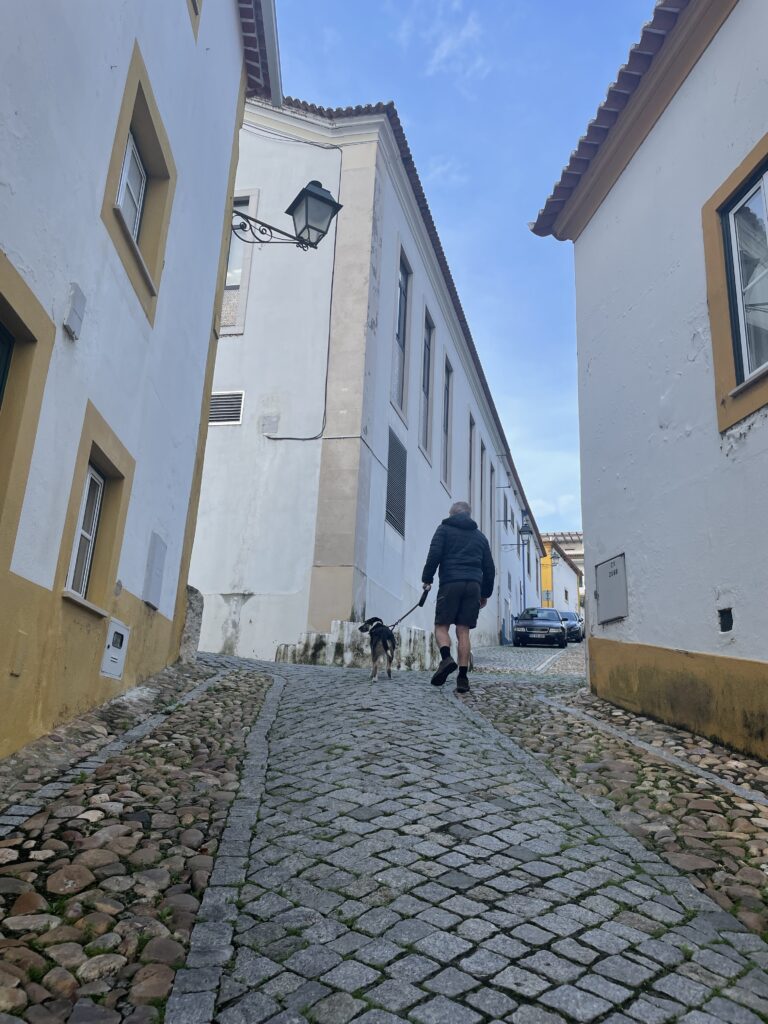
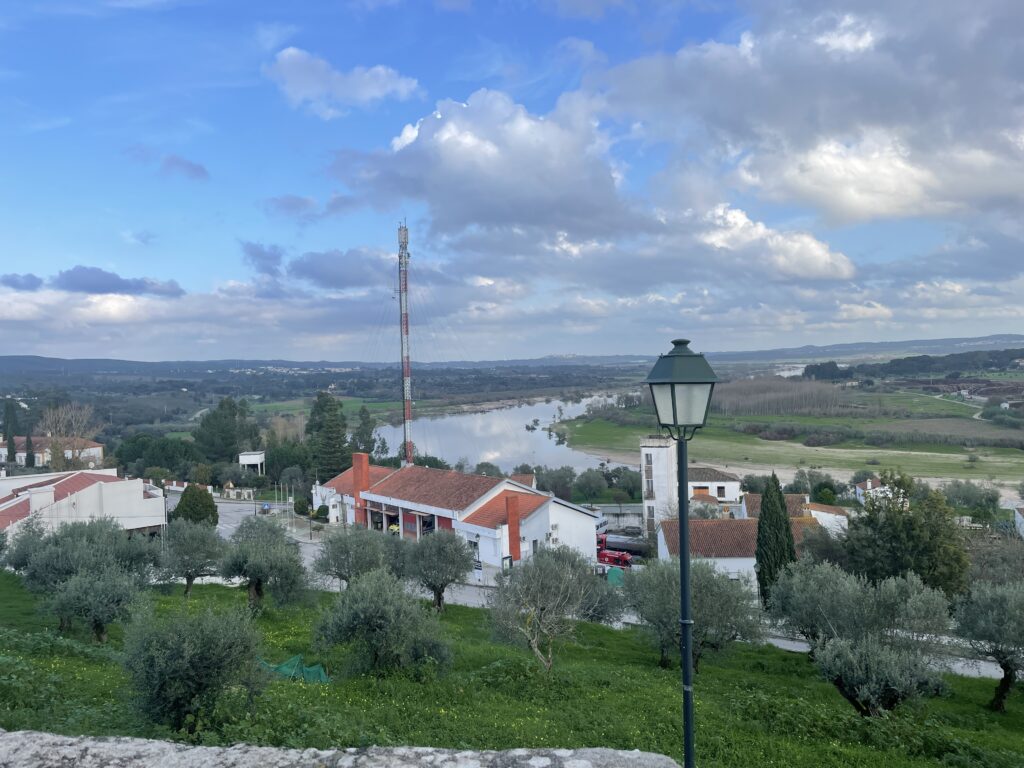
On exploring we came across a statue of Lius de Camões – a famous Portuguese poet from the 15th century. His greatest work Os Lusiadas is regarded as one of the most important pieces of literature of Portugal, the Portuguese regard Camoes on a par to Shakespeare and Virgil. Locals here believe that he lived in the village for a time in his life and they have rebuilt the ruins of his house in his honour, created a memory garden that contains all 52 plants that are mentioned in his works and erected a seated statue of the great man himself sitting in the garden. There is also a panel that displays all the places he visited in the world as he was a great traveller.
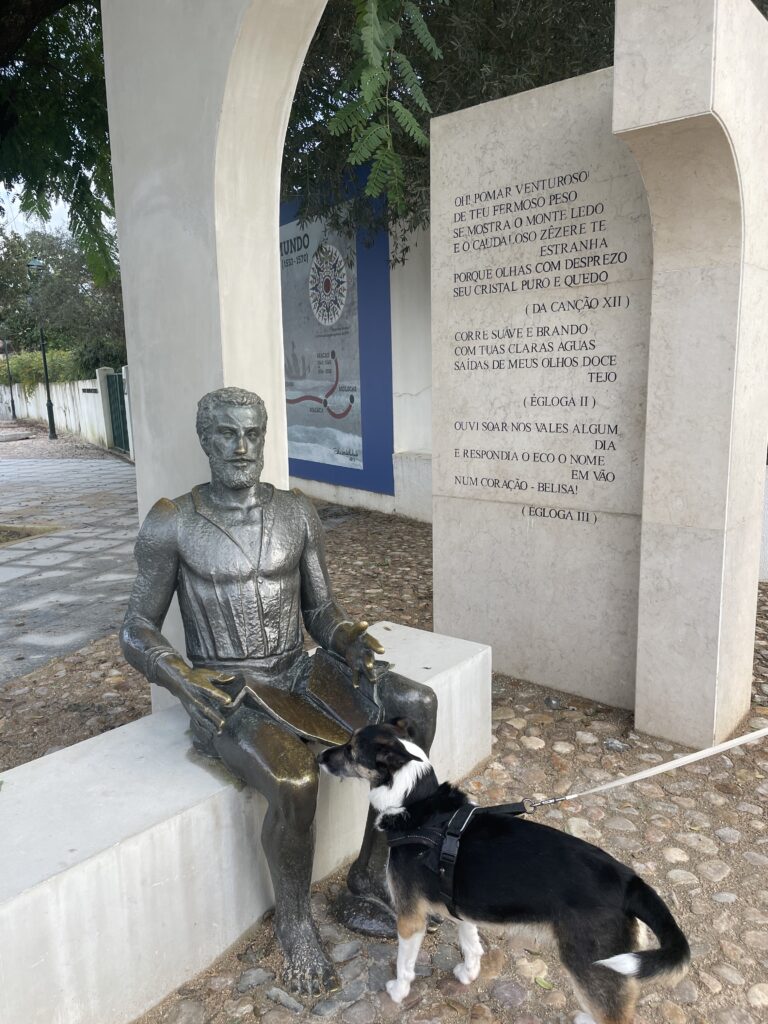
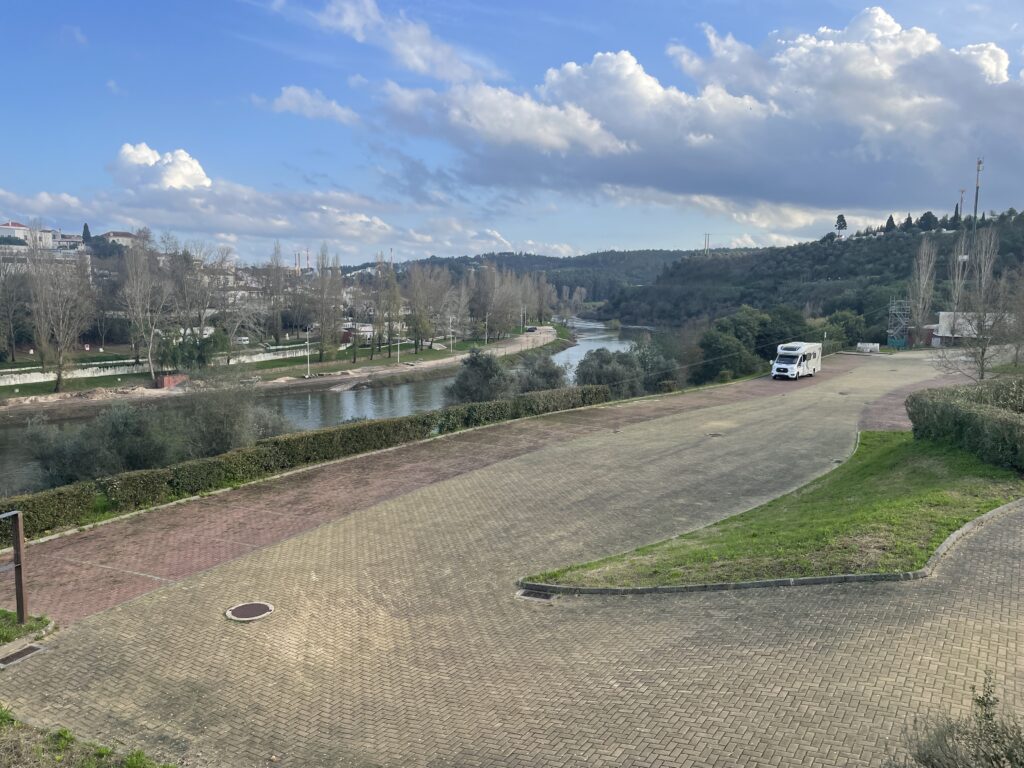
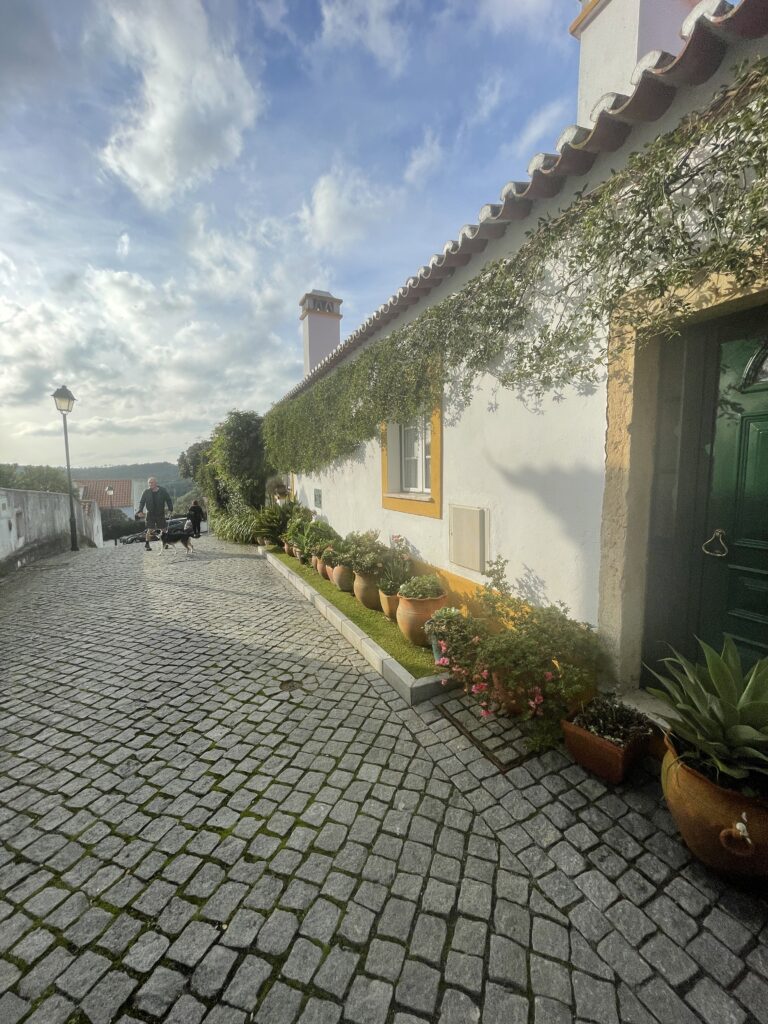
Constancia itself is a picturesque town with narrow cobbled streets and stairways spiralling up to the church at the top and as is common in Portuguese towns and villages the buildings are painted white with windows and door frames painted in an alternative colour, usually pale yellow, blue or cream. The outside of Portuguese catholic churches are appear quite bland compared to the ornate architecture of our churches in the UK but inside they can be quite busy and sometimes have a lot of gilding, the Catholics think gold is sacred.
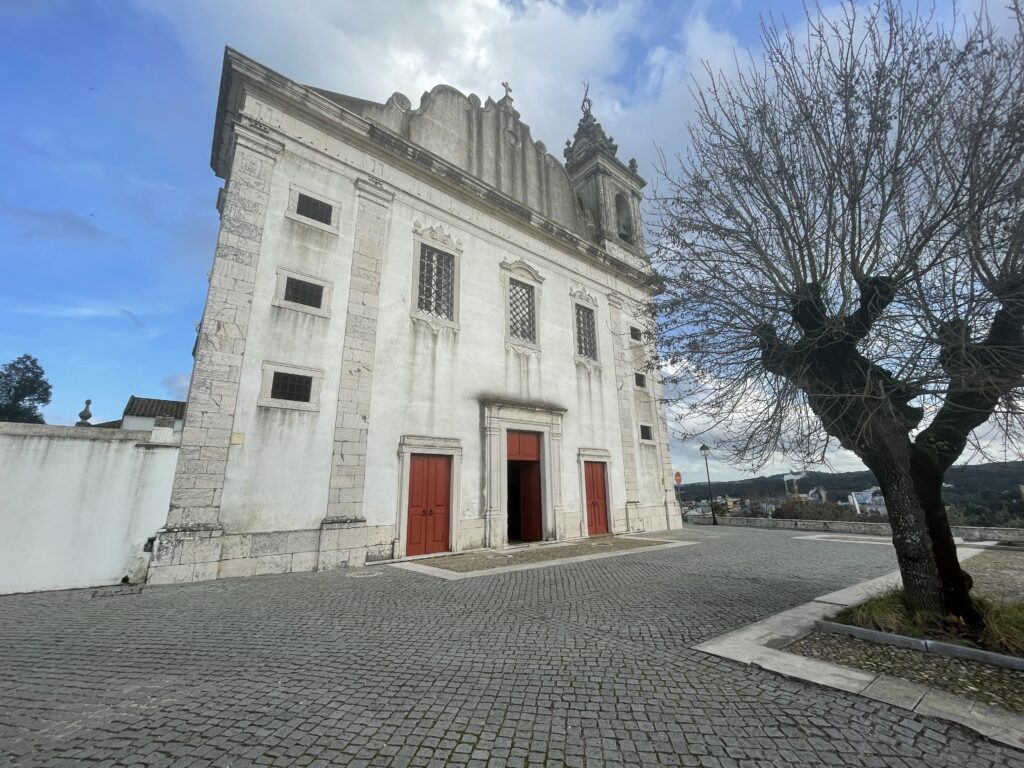
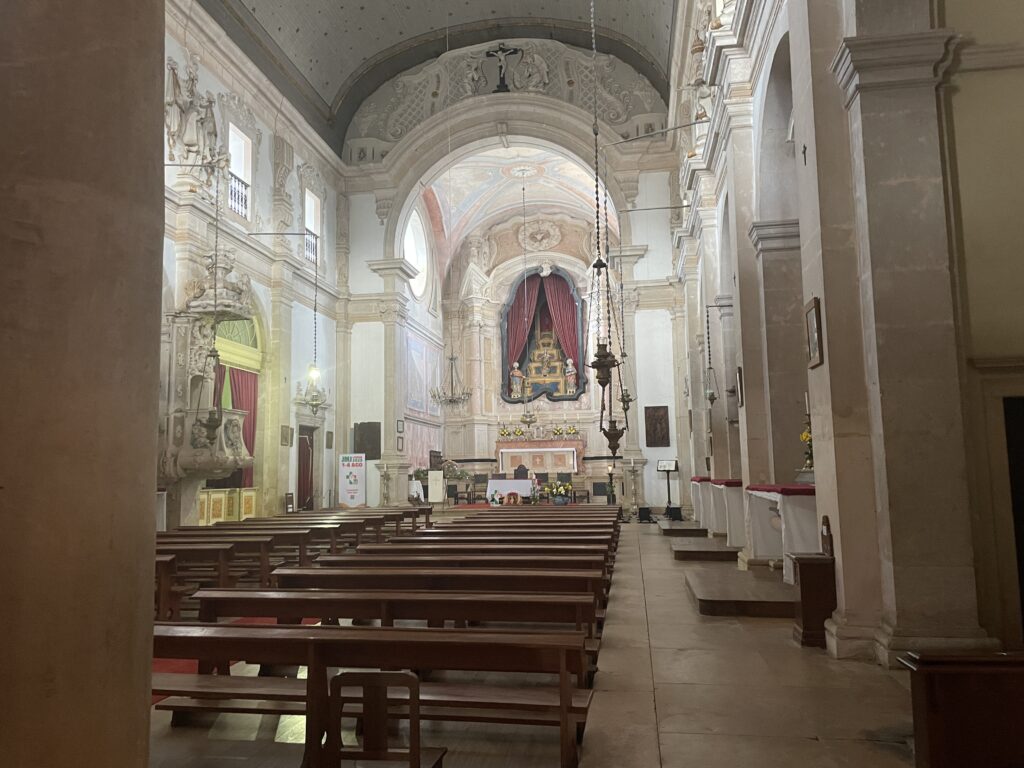
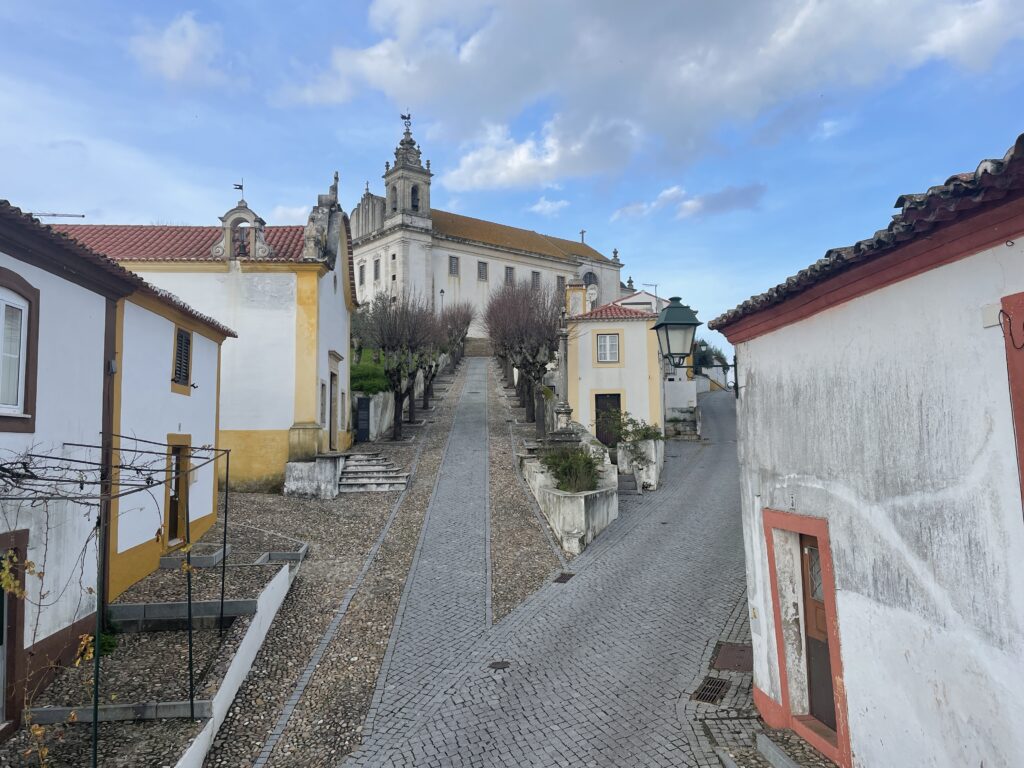
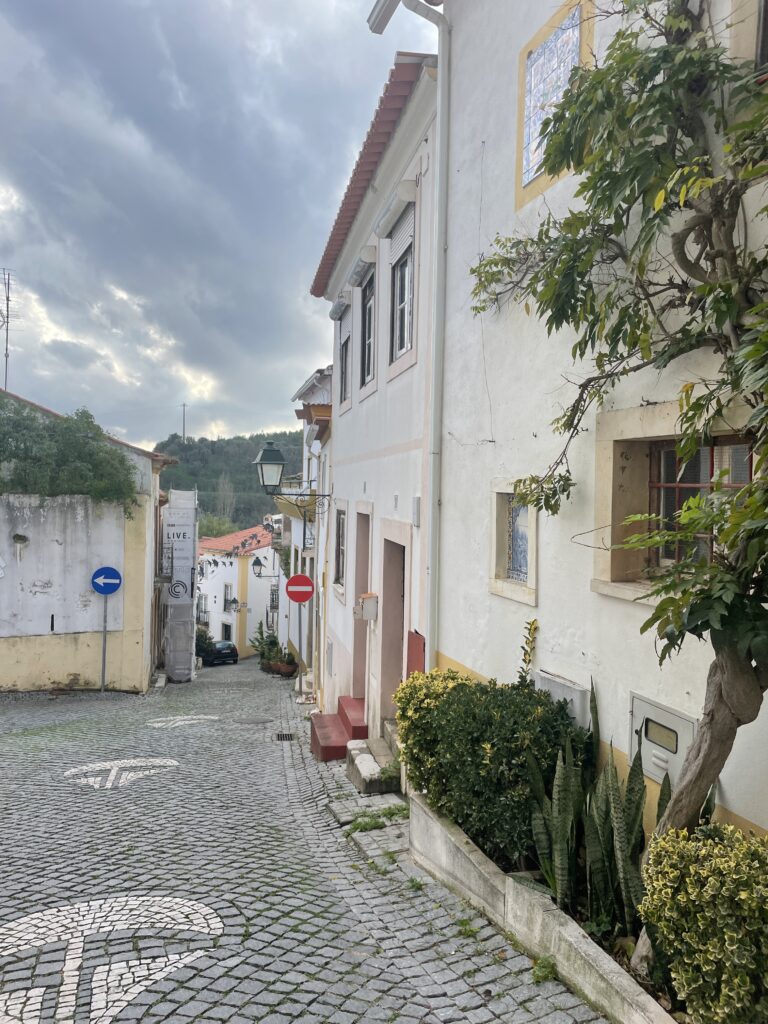
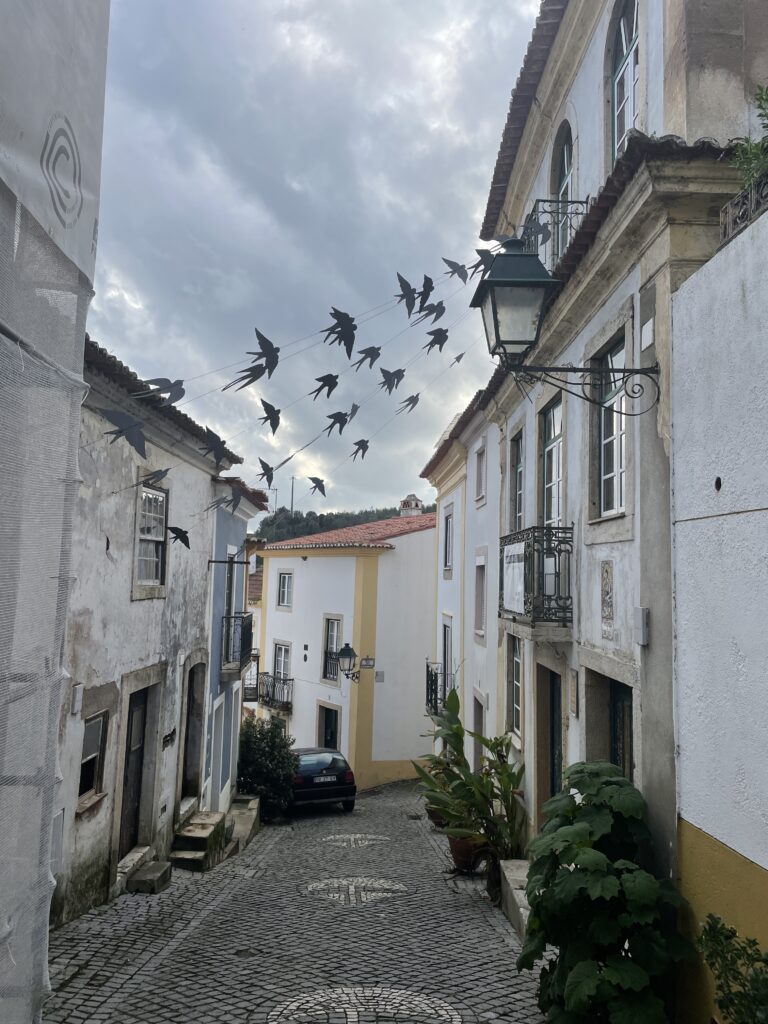
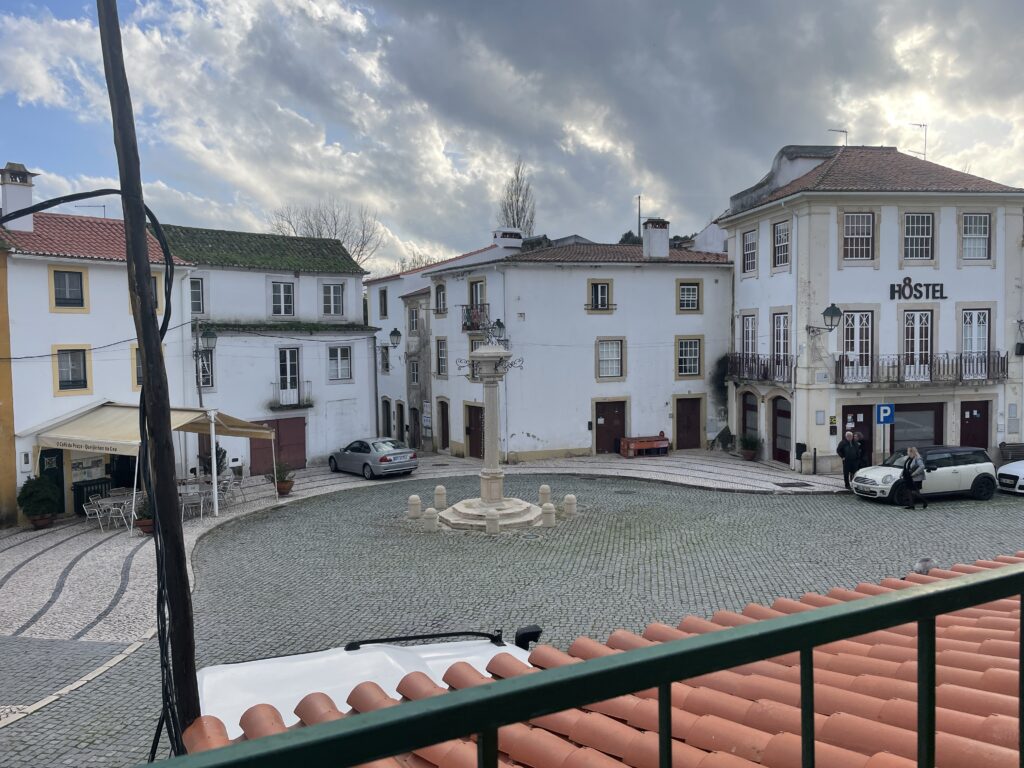
We had lunch here and manged to eat inside for once – I chose a Portuguese dish called ‘Bacalhau com Natas (Cod with cream) this was salted cod cooked with grated potato and cheese in cream. Delicious, rich and very filling! With it I had a glass of house white wine which was also delicious at 90 cents. How could I not refuse!

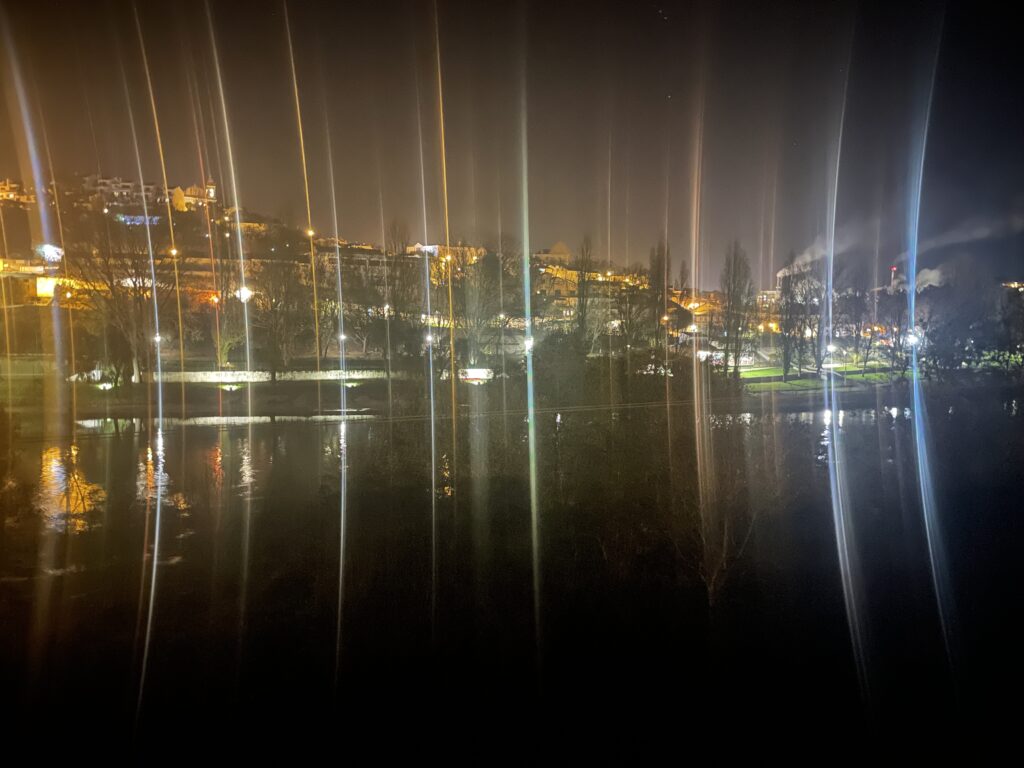
Our Aire was located on the other side of the river Zezere from the town. The Zezere river is a fast-flowing and flows into the Tagus, it once was used to transport wood from the mountains and Constancia still has a 24 hour papermill that must supply the locals with work. The Tagus River flows from its source in mid-eastern Spain for 1000km to it’s mouth into the Atlantic to form the port of Lisbon. It is of great significance in Portugal.
We are now not far from the N2 a national road that starts in the north of Portugal at Chaves and goes right down through the middle of the country to Faro in the south. Forums say it shows the real Portugal and I had wanted to drive some of it, so we joined it at Abrantes for about 100km to take us to Evora.

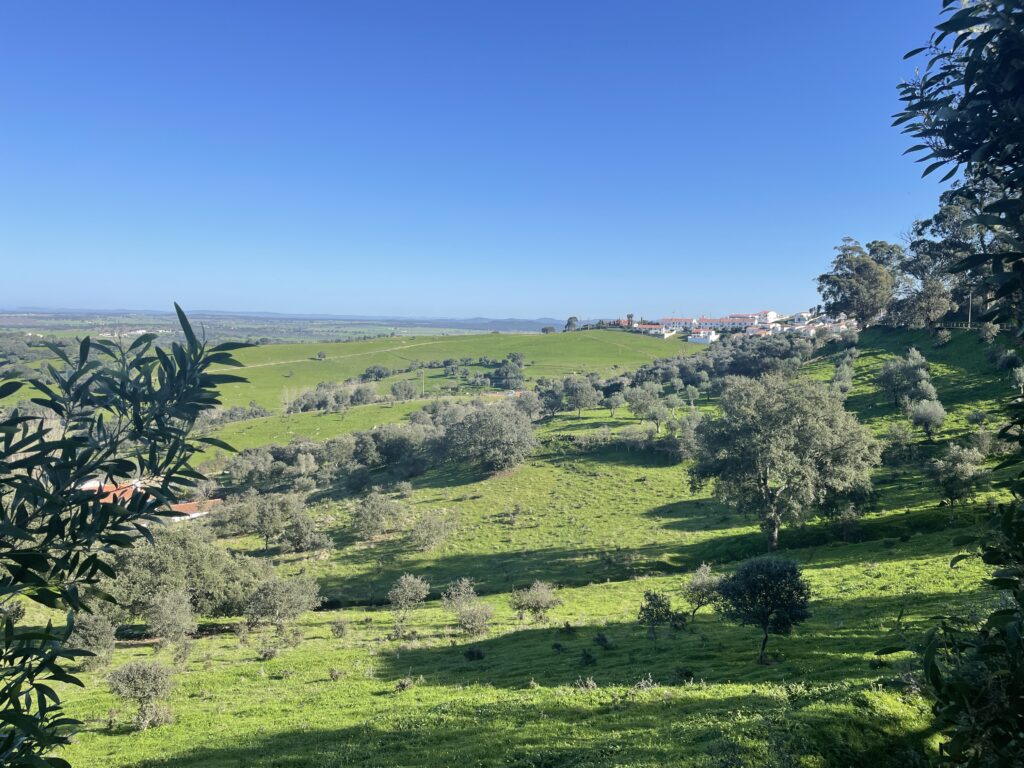
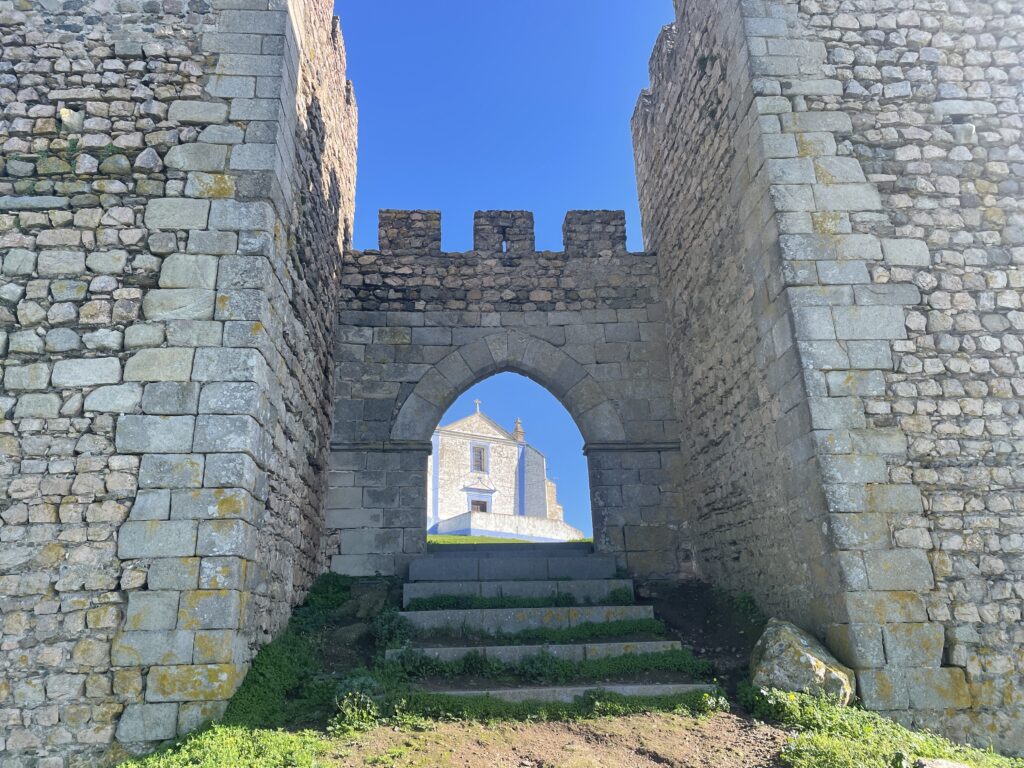
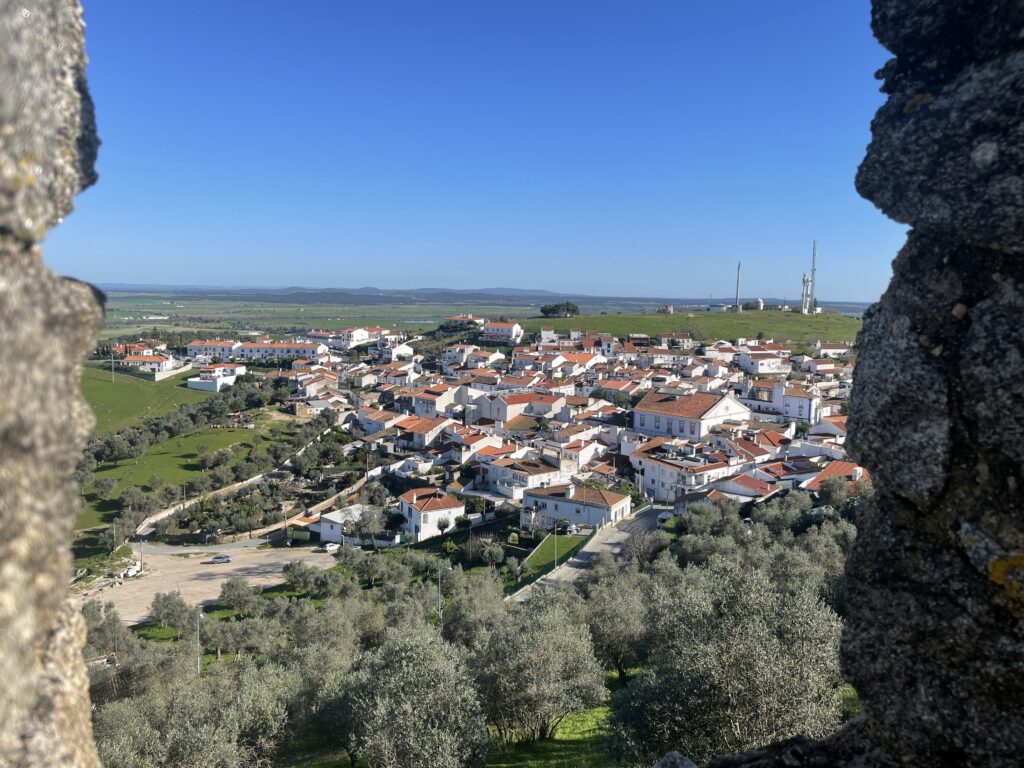
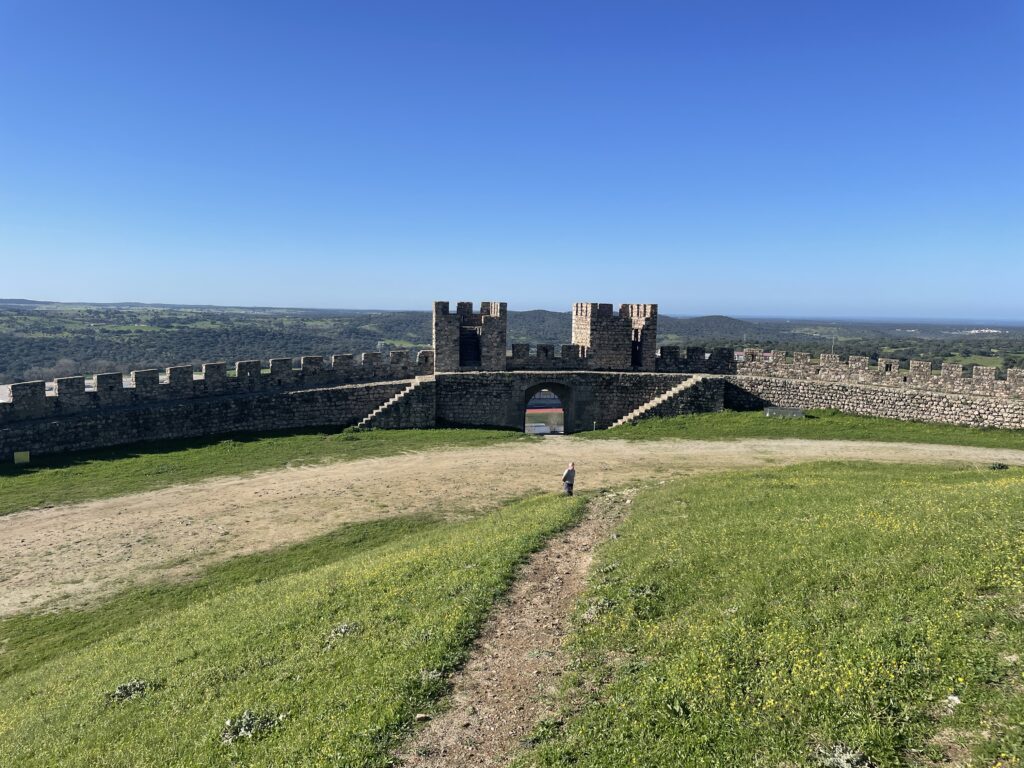
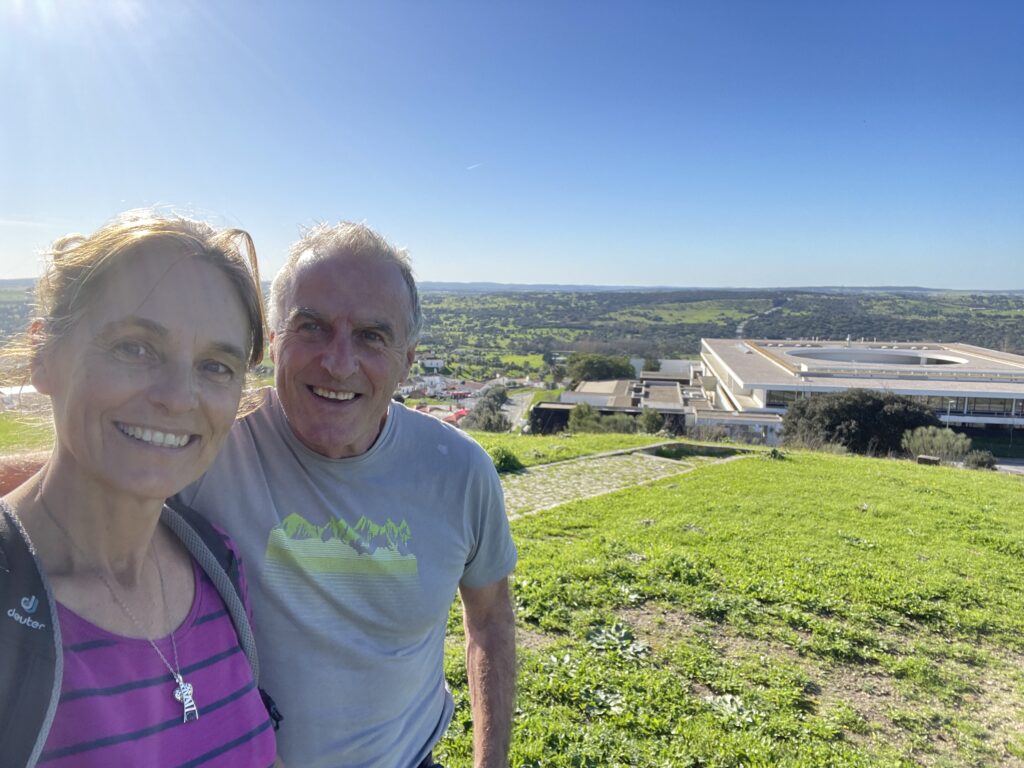
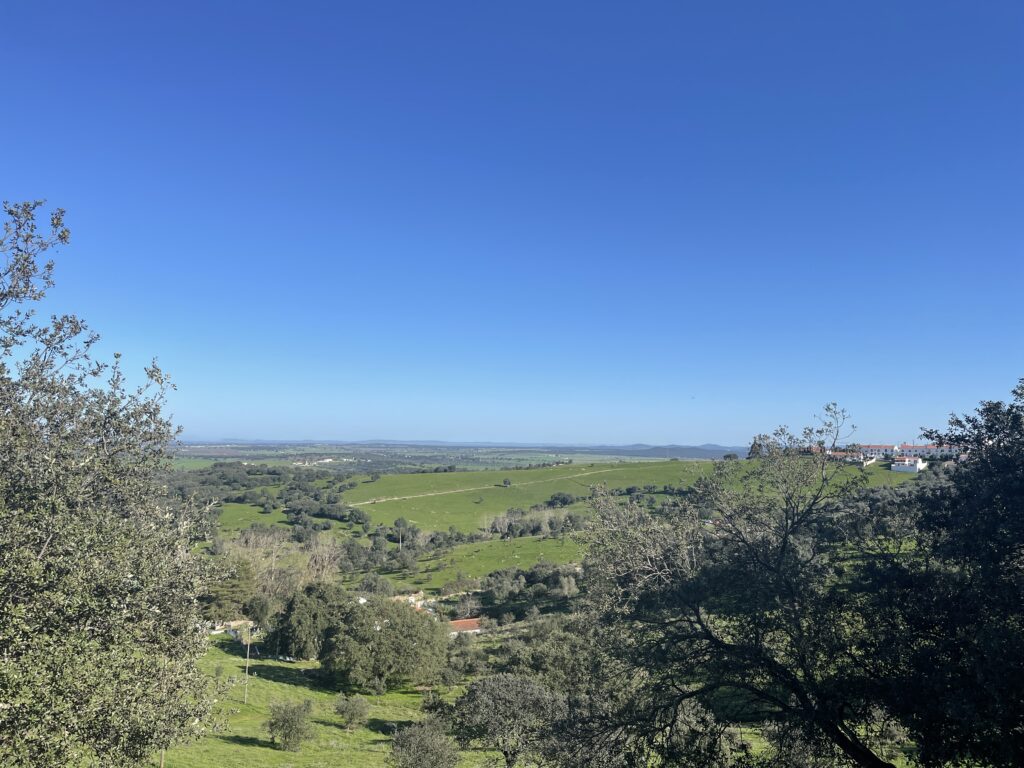
The drive went through a small mountainous area and then though flat plains of mid Portugal, past lakes and miles of olive tree plantations and a few vineyards. We were now in the Alentejo region of Portugal. Once again the roads were empty, there was little chance to stop as there are very few lay-bys suitable for motor homes to stop at until we reached a town called Arraiolos. We stopped here for lunch and were blown away by the views and the huge fortress high up above the village. Why is it that we are always walking up steps?!
Our destination that day was Evora, a city in the middle of Portugal, a World heritage UNESCO site due to a well preserved medieval walled town with many historical monuments, particularly the roman ruins of Temple Diana from the 1st Century AD, the Gothic Cathedral first built in 12th century and the skeleton-adorned Chapel of Bones.

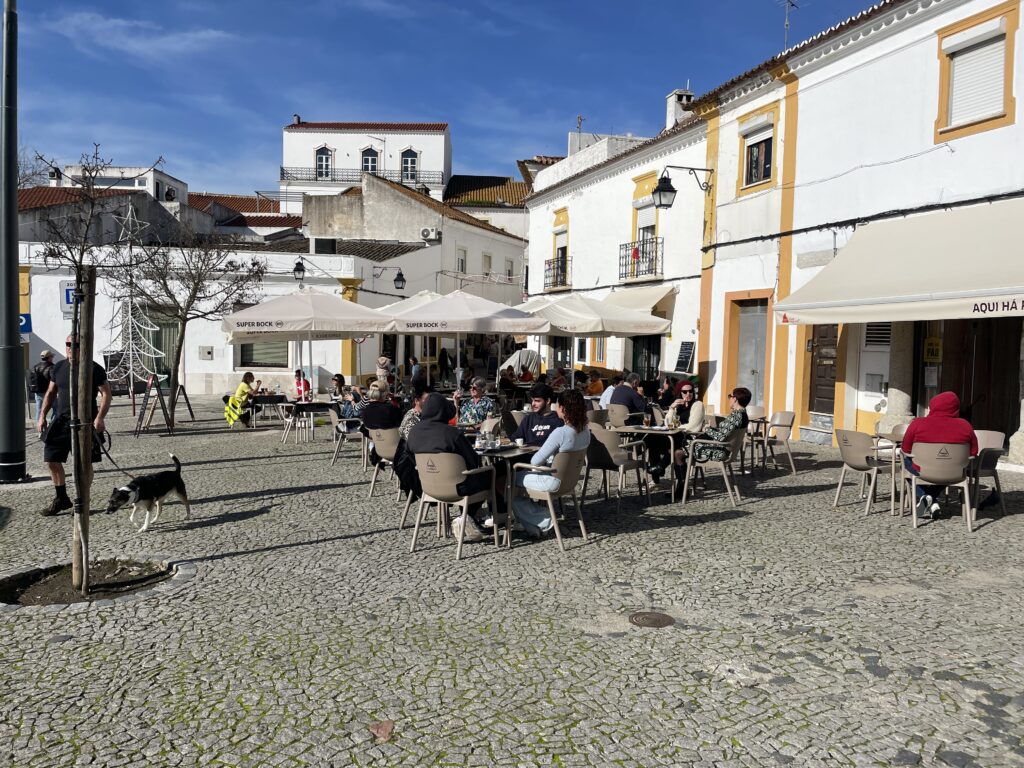
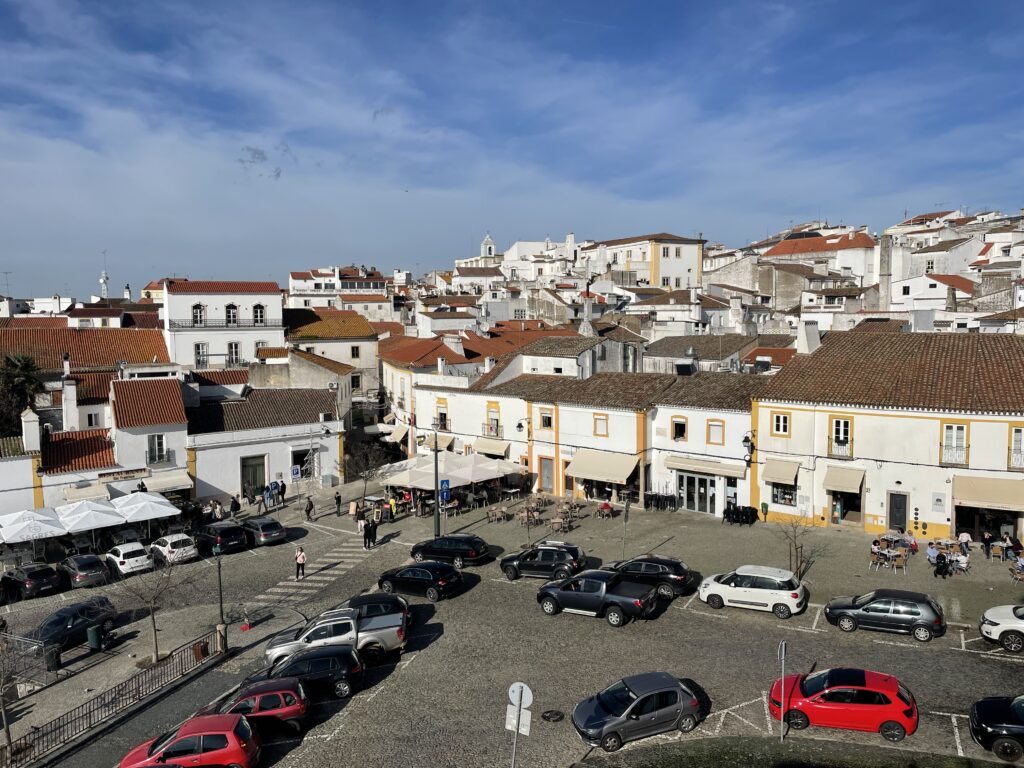

We arrived to the city in view of the 15th century stone aqua duct that at one point connected fountains for 18 kms to provide drinking water to a drought prone area of Portugal.
We spent two nights in Evora at a campsite as we wanted a whole day to explore the city. It was a 2km walk into the walled city itself but worth the walk.

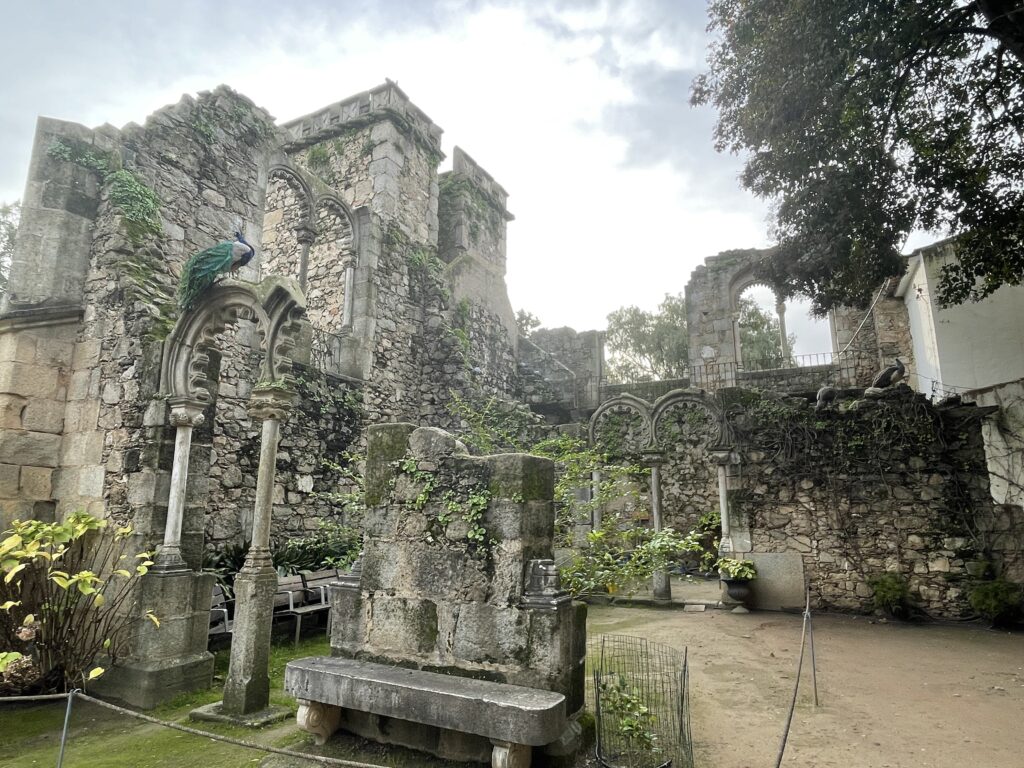

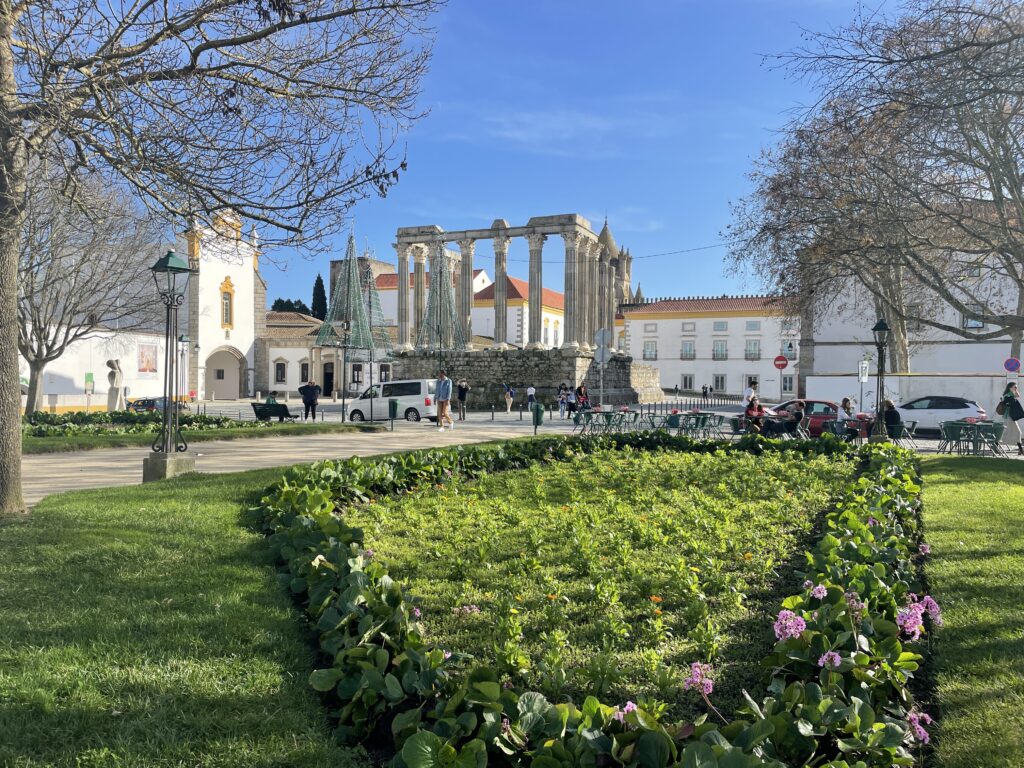
We both loved this city and would come back again. We walked, had coffee (in Portugal they have expresso shots regularly and cost anything from 70 cents to 1.50 Euros), walked, had lunch, walked and walked more.
The chapel of skulls was fascinating and deserves a mention – it is the oldest Chapel of Bones in Portugal. The idea is that the bones of the burials connected to the convent were used in its construction. It was believed to be one of the preferred places to be buried by the locals as it would guarantee absolution of sins. The chapel was and is used as a place for prayer and meditation – you might find consolation according to what is announced on the first day of lent:
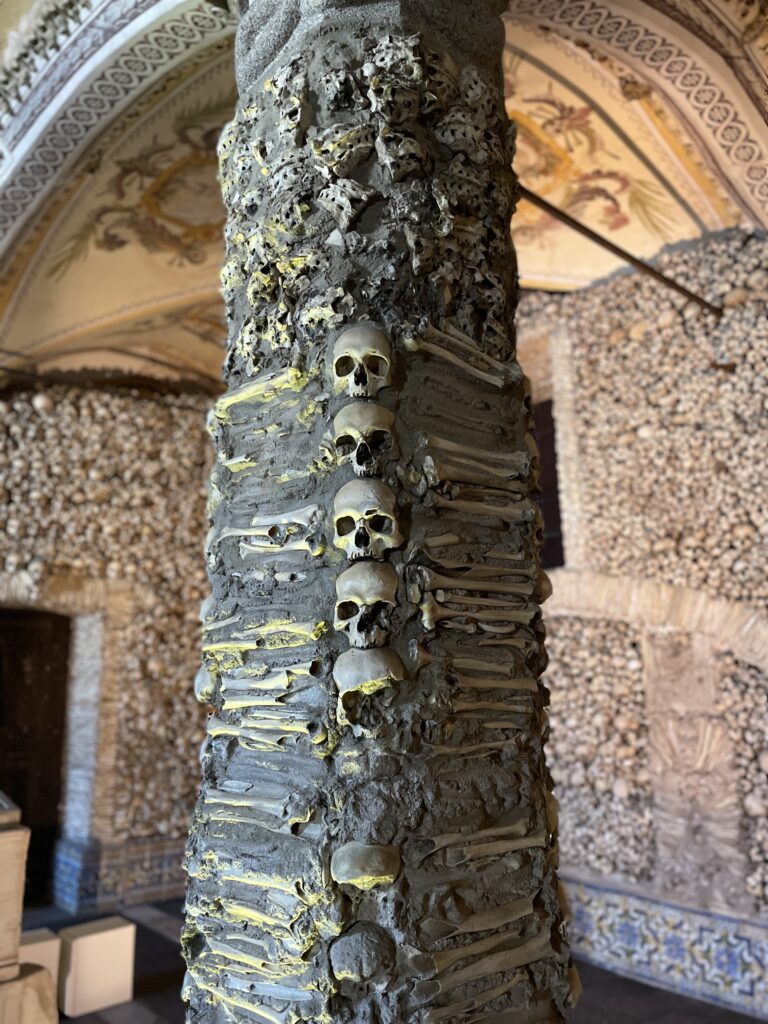
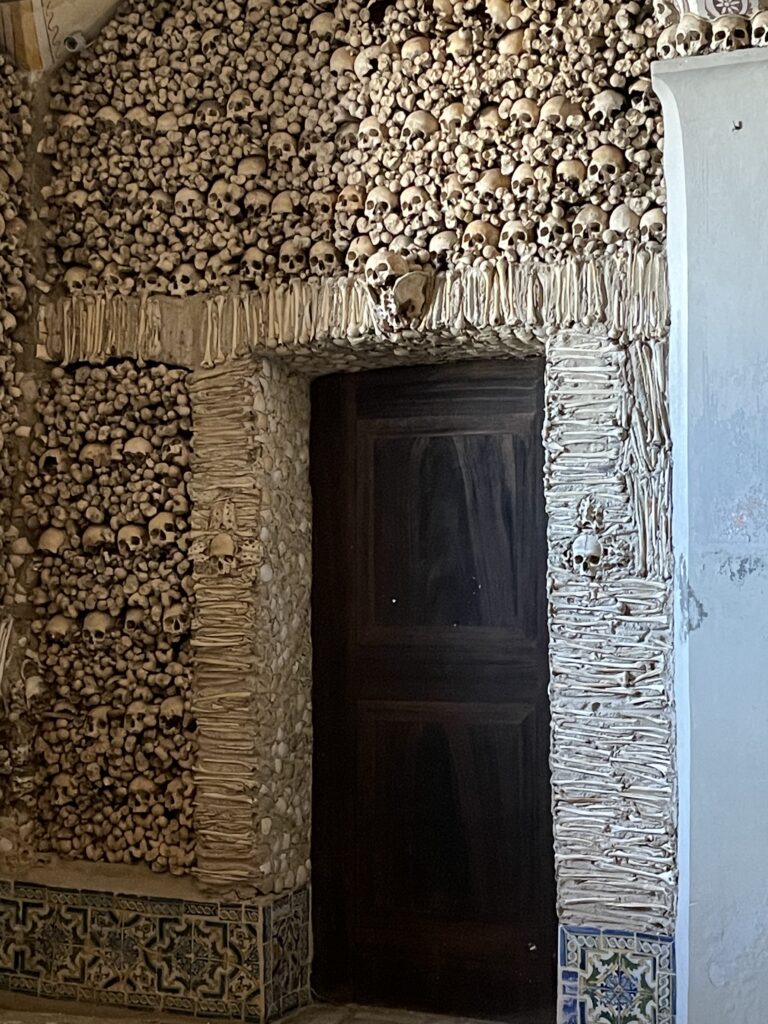
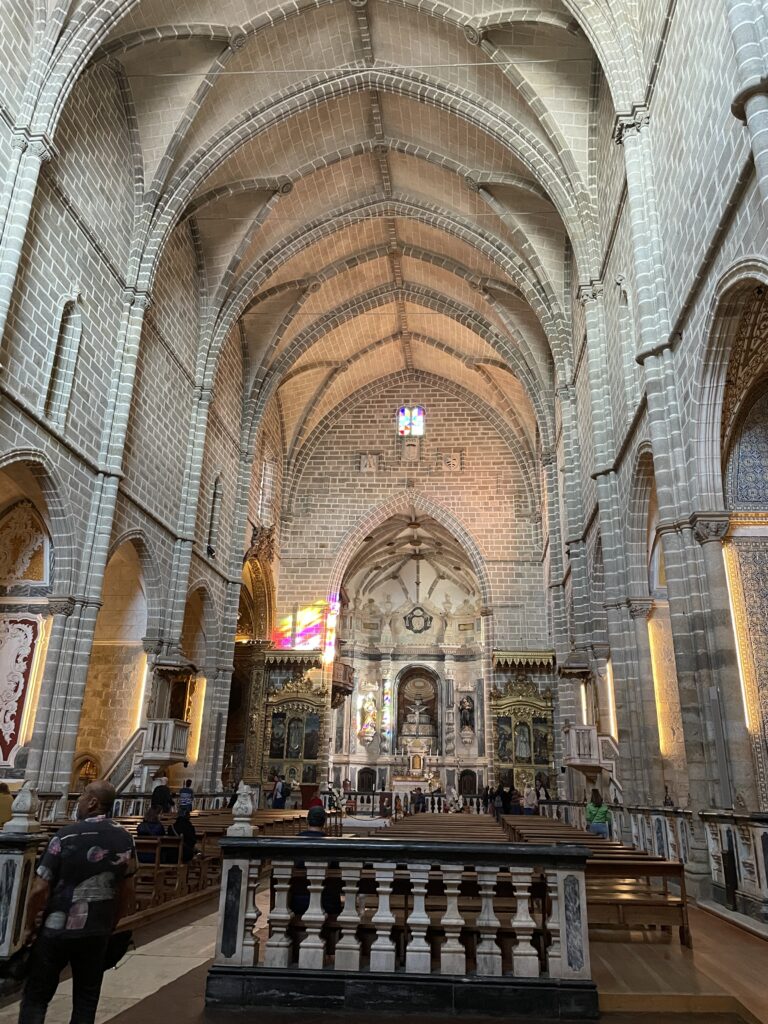
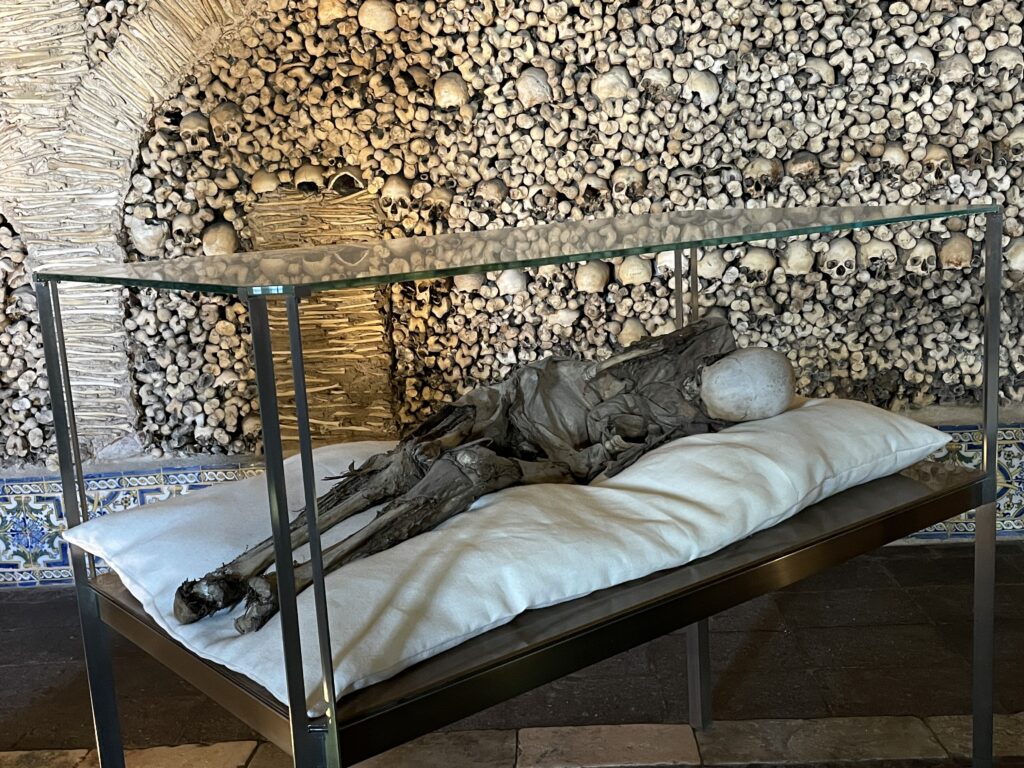
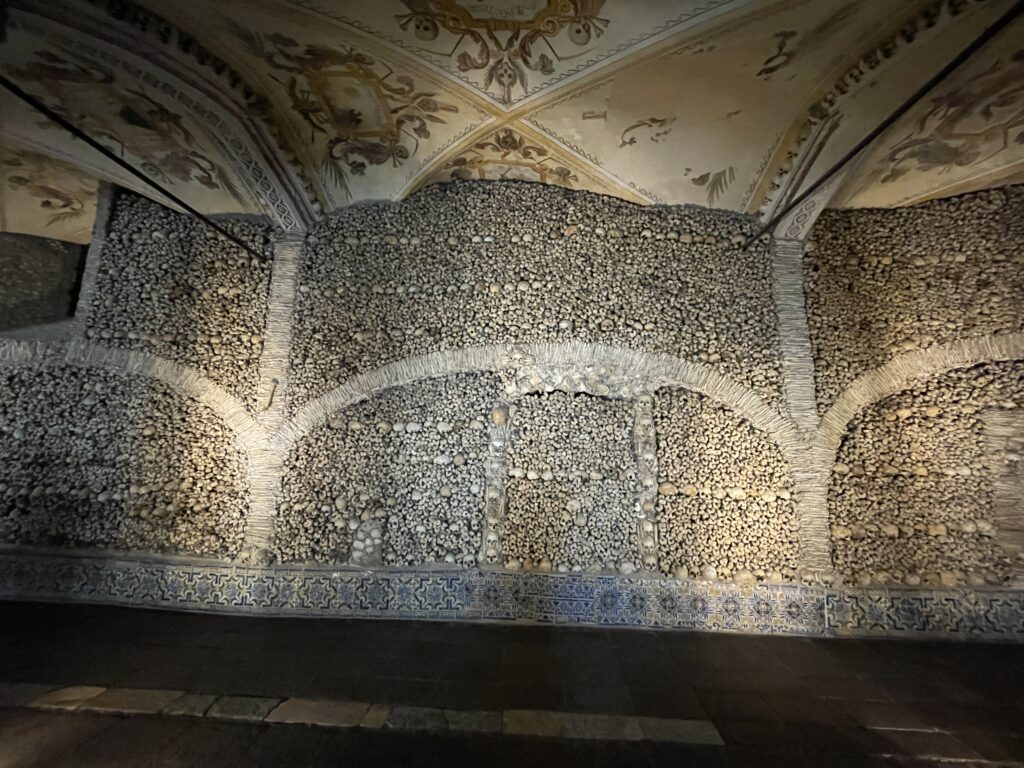
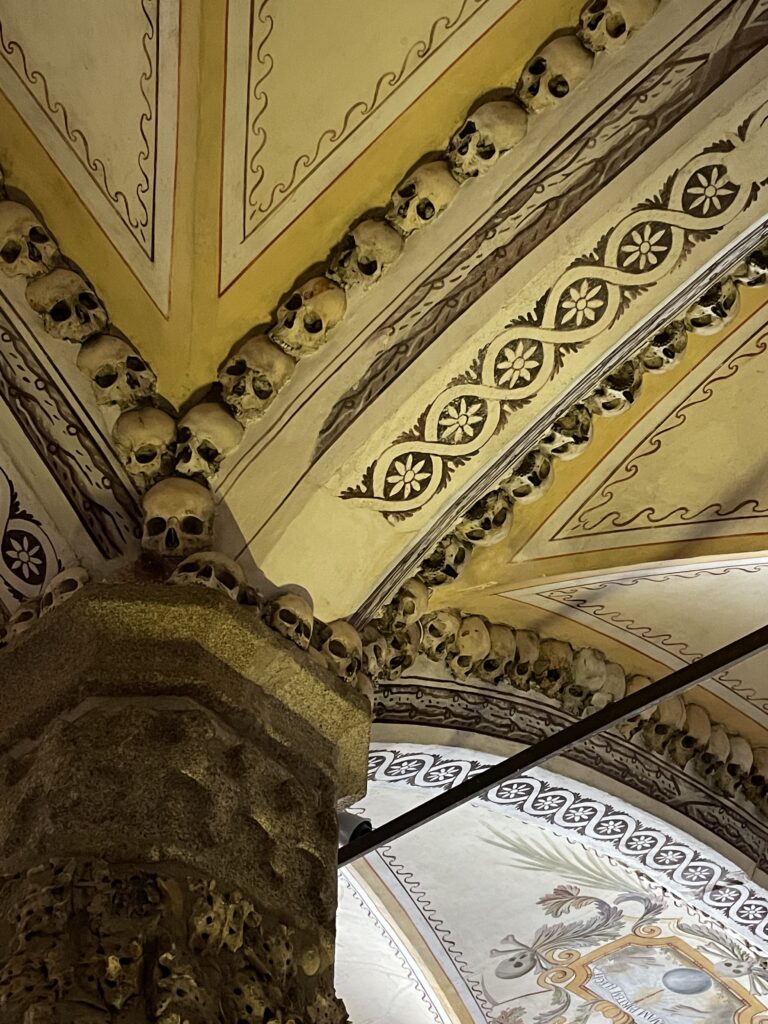
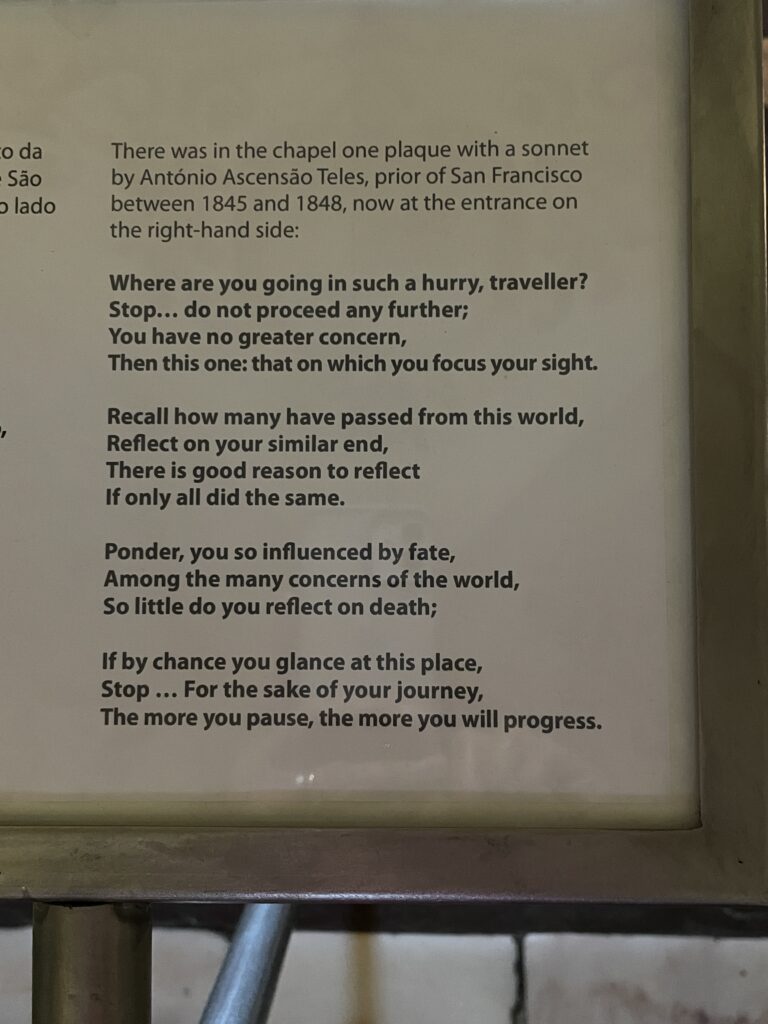
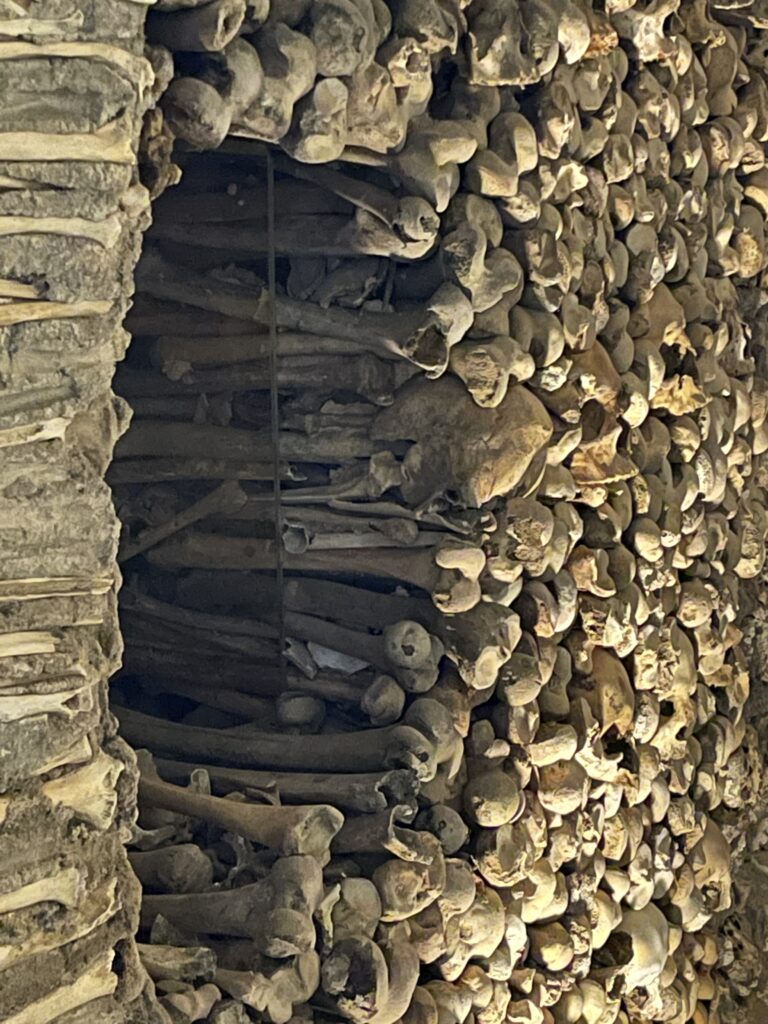
Remember, o man that you are dust and to the dust you will return.
And at the entrance to the Chapel are the words-
WE THE BONES THAT ARE HERE FOR YOURS WE ARE WAITING.
Quite a sinister place to visit and I might mention that Bob chose not to!!

9 Responses
Looks fabulous…
You need to write a for motorhomers, your knowledge is amazing! Surprised it was only 1 glass of wine at that price?
Happy New Year from a very wet and muddy Dorset!
Happy New Year to you both. Pictures look amazing. xx
Oooh that chapel looks spooky ! But also extremely interesting ! I’ve only been to Portugal once …and loved it ! You’re so lucky to be seeing the “ real “ Portugal ! The blue skies look so inviting . Wet and windy here , but at least not cold ! Off to Lapland at end of month for a week in the snow ! Can’t wait ! 😀
Looks amazing – what beautiful places and wonderful photos – wishing you a very Happy 2023 – sending lots of love, Linda, Sid & the Gang xx
We love Evora and remember that little chapel very well – looks like you have lovely sunny weather too! XX
Happy New Year !!
Just catching up on your latest Blog. Wet & windy here in Dorset so nice to read about your travels. Xx
Happy New Year to you both. Looks like you’re having an amazing time. Keep the narrative coming.xx
Ooooh soo manu skulls in one place- what an experience
Did the church feel crowded?